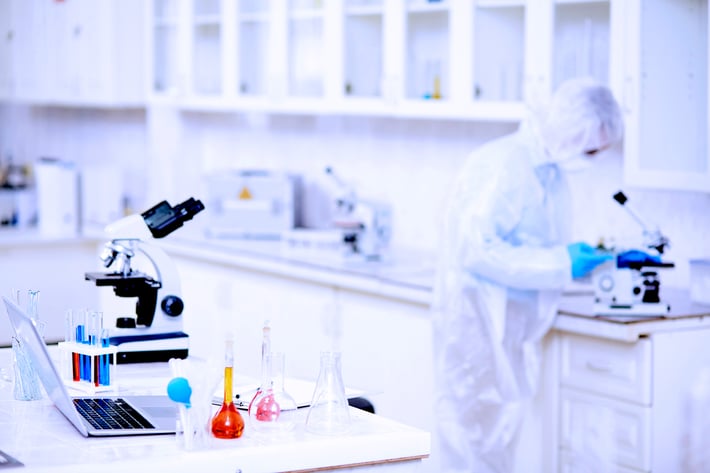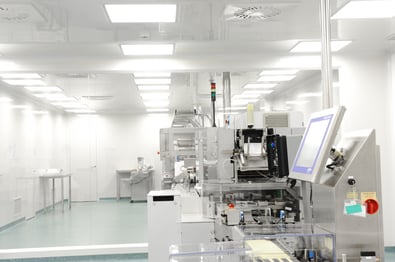
Three Essential Components to Monitor to Ensure Success for the Global, Commercial Lab
The environmental monitoring requirements to which the largest pharmaceutical manufacturing companies in the world must adhere to are rigorous, as anyone who has explored the Code of Federal Regulations - Title 21 can attest to.
As a pharma manufacturing, clinical, or R&D lab grows from start-up to mid-sized to a global organization, full adherence to the requirements only becomes more complex, stemming primarily from the complexity of a growing business as it extends its reach and operations.
Adding to the above, the threat of an audit often grows as a lab grows and starts to get on the radar of ISO, the FDA, and other regulatory organizations. This creates an issue beyond simply being compliant, which is being able to prove you’re compliant. (And, often, quickly prove it.)
How can a lab ensure its operating environment remains “up to code” as it grows its business, adds staff and facilities, and sets sail into the often choppy waters of commercialization and globalization?
The answer is simple: extensive, connected, and “always on” monitoring. The three primary functional areas to consider when building out a monitoring system – be it in pharma manufacturing, biotech, R&D, or others – are the equipment, people, and environment (air quality, temperature, humidity, etc.).
New Equipment, New Concerns

To loosely quote the words of the Notorious B.I.G., “more equipment, more problems.” As a lab goes global, its equipment, by necessity, often becomes 1) more complex and 2) more dispersed.
A pharma manufacturing lab may be using some of the same lab equipment in its headquarters as it has used since the start-up days. The challenge? Ensuring it’s running as well and as cleanly now as it did then.
The same pharma lab may have also opened production facilities overseas. The challenge, or rather challenges, are almost too many to count, but here are a couple of examples:
New equipment = new monitoring requirements and hardware
Work being done overseas may mean a compliance officer on the clock 24/7
Information collected in an offshore production facility needs to be collected and analyzed at HQ… the list goes on.
In every case, a lab needs to monitor every piece of equipment and every nuance. For example, consider equipment maintenance and calibration. Is calibration outsourced? Is it internal? Is maintenance reactive or prescriptive? How do you know and document all of the preceding?
For these challenges and others, it’s essential to have a monitoring solution that collects all available equipment data (usage, uptime, last scheduled maintenance, etc.) and centralizes it for easy review by administrators and (hopefully not) auditors.
Now, let’s dig into the most essential and often least predictable part of a global lab: its people.
Shiny, Happy, All-Too-Human People
No escaping it: people are flawed. Mistakes happen. And the more people, the more risk of errors.
A growing lab must train new hires in the nature and necessity of an environmental monitoring system: the guidelines to follow when entering/leaving the facility, while in a working lab space, and even when simply opening and closing a freezer or other piece of equipment.
Not everyone in your enterprise needs to be an expert in environmental monitoring. Still, they should have a clear understanding of what data they’re collecting, how, and why, so that they can play their part in ensuring a safe and effective work environment. Clearly defined and readily available SOPs are a big help.
Additionally, some of your people will need to be part of your monitoring system’s reporting functionalities. For example, a start-up lab may not have a compliance officer who needs a dashboard detailing equipment operationality and facility integrity. Still, you may rest assured a global one does.
A monitoring system pays immediate dividends by delivering both insight and understanding to staff such as compliance officers. In addition, your system should be able to generate reports on demand that empower its users and department leader with both information and a means to act on that information.
The Lab Environment, Part One
For “The Lab Environment, Part One,” we’ll consider a lab's specific, traditional environmental qualities: air quality, room temperatures, humidity, VOCs (volatile organic compounds), and more across, within, and outside your facilities.
These elements differ by geography, so you must ensure you’re not taking a one-size-fits-all approach to monitoring. E.g., the temperature and air quality in, say, Los Angeles will differ significantly from that in Geneva, and have varying impacts on the work being done in local facilities.
Just as with equipment, the more locations a lab has, the more risk it typically introduces and, therefore, the more data it needs to collect to identify and address risk. Unfortunately, that can sometimes be a torrential amount of data.
Imagine trying to collect and codify temperature and humidity data from 16 different facilities across four different continents, HVAC system reports from hundreds of clean rooms, the impact of construction outside of one lab building compared to another… The variables are once again endless.
But with an experienced monitoring service provider (ideally, with global experience), you can more quickly identify the key datasets that keep a business moving forward and give stakeholders peace of mind.
You can connect the various moving parts of your overall operation more quickly and get both the macro- and micro-data you need in real-time. Enabling you to focus not just on the environment of your lab as it pertains to air quality, HVAC, and more, but on overall efficiency.
The Lab Environment, Part Two
The overall operating environment includes the standard meaning of environment (air quality, etc.), the people, and the equipment and facilities. THIS is what we talk about when we talk about environmental monitoring: it’s a means of ensuring accurate, constant oversight of your entire ecosystem.
There are relationships between specific people and certain equipment. There are connections between air quality and specific geography or facilities. Some variables run the gamut across your teams, hardware, samples and materials, and your workflows. This is the environment you’re overseeing.
And there is a single solution to help you, XiltriX Monitoring-as-a-Service. We provide the hardware (sensors, wiring, etc.), the software, the reporting, and the support and expertise to ensure your lab feels local even as it goes global. We keep you connected to the critical data that lets you know your operating environment is sound. Learn more today.
